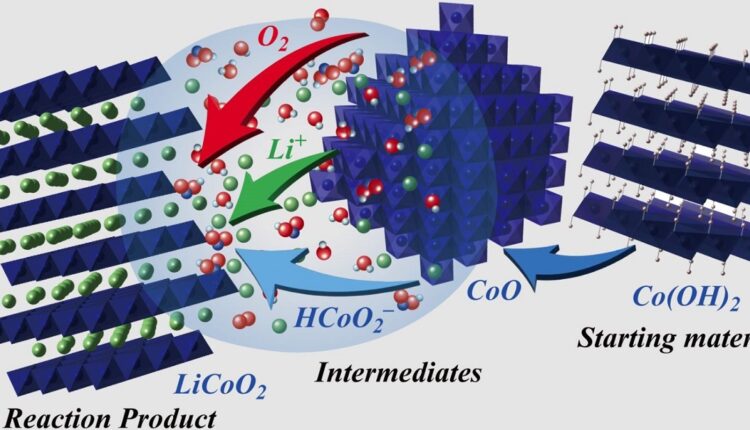A team of researchers from Hokkaido University and Kobe University, led by Professor Masaki Matsui from the Faculty of Science at Hokkaido University, has developed the new method that simplifies the synthesis process of battery compounds. lithium, as published in the journal Inorganic Chemistry.
Lithium-ion batteries (LIB) are the most widely used type of battery in consumer electronics and electric vehicles. Lithium cobalt oxide (LiCoO2) is the compound used for the cathode in LIB for portable electronic devices. Traditionally, the synthesis of this compound requires temperatures above 800 degrees Celsius and takes 10 to 20 hours to complete.
Layered lithium cobalt oxide, a key component of lithium-ion batteries, has been synthesized at temperatures as low as 300 degrees Celsius and in just 30 minutes.
“Lithium cobalt oxide can typically be synthesized in two ways,” Matsui explains in a statement. “One form is a layered rock salt structure, called a high-temperature phase, and the other form is a spinel structure, called a low-temperature phase. Layered LiCoO2 is used in lithium-ion batteries.”
Using cobalt hydroxide and lithium hydroxide as starting materials, with sodium or potassium hydroxide as an additive, the team carried out a series of high-precision experiments under different conditions to synthesize layered LiCoO2 crystals. The process was called the “hydroflow process.” They were also able to determine the reaction pathway that led to the formation of layered crystals.
“By understanding the reaction pathway, we were able to identify the factors that promoted the growth of layered LiCoO2 crystals,” Matsui said. “Specifically, the presence of water molecules in the starting materials significantly improved the crystallinity of the final product.”
The team also measured the electrochemical properties of the layered LiCoO2, showing that they were only marginally inferior to those of commercially available LiCoO2 synthesized by the traditional high-temperature method.
“This work is the first experimental demonstration of the thermochemical stability of layered LiCoO2 at low temperatures under ambient pressure,” concludes Matsui. “Our development of this hydroflow process will enable energy saving measures in various ceramic production processes. Our immediate next steps will be the improvement of the hydroflow process based on our understanding of the reaction pathway.”
Source: dpa
(Referential image source: Masaki Matsui, Europa Press / dpa)
Visit our news channel on Google News and follow us to get accurate, interesting information and stay up to date with everything. You can also see our daily content on Twitter and Instagram


